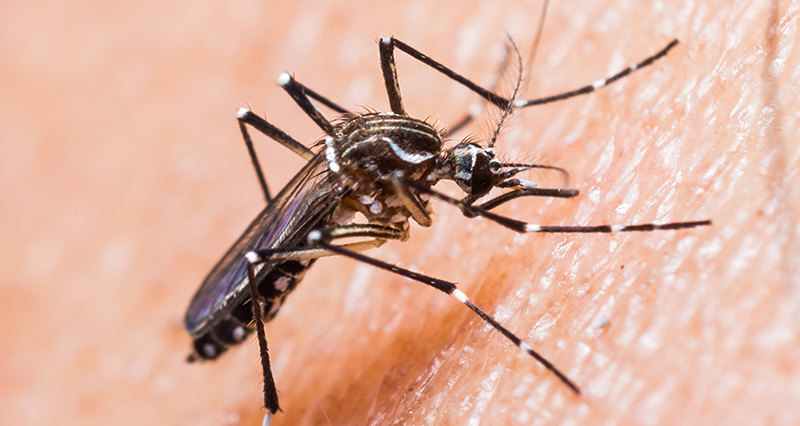
Zika virus is primarily spread through mosquitoes. (Photo courtesy Fotolia/TNS)
While no cases of Zika virus have been acquired in Ohio, four cases have been documented within state borders, according to the Centers for Disease Control and Prevention. While news of Zika virus cases are becoming more prominent, most students at Ohio State should not be alarmed but should take precautions when traveling abroad to infected areas.
Melanie Amato, a public information officer for the Ohio Department of Health, said in an email that questions about the virus, which is transmitted through mosquito bites, can be answered with the ODH’s Zika web page, which states, “The primary mosquito that transmits Zika virus is Aedes aegypti, the yellow fever mosquito. This mosquito is found in the tropics and southern United States. It (is) not established in Ohio.”
According to ODH’s website, 80 percent of people infected with Zika virus will not show symptoms. Those who do might experience mild symptoms, such as fever, rash, red eyes and muscle pain. Cases resulting in hospitalization are uncommon.
Anyone, including students, traveling to areas with documented Zika virus transmission should take precautions against mosquito bites. ODH’s Zika page suggests covering up with long-sleeved shirts and pants, staying in places with window and door screens to keep mosquitoes outside, using a mosquito bed net and wearing Environmental Protection Agency-registered insect repellents.
A list of areas with Zika virus transmission can be found on the CDC’s website and includes areas in the Caribbean, Central America, Mexico, Pacific Islands and South America.
“Because of the possible association between Zika virus infections in pregnant women and certain birth defects, CDC recommends that pregnant women consider postponing travel to any area where Zika virus transmission is ongoing,” ODH’s website states.
According to the CDC’s website, 82 reports of travel-associated Zika virus have been documented within the continental U.S. so far, but no cases of locally acquired Zika virus reports have been documented.
Gladys Gibbs, director of Student Health Services, said in an email that the vast majority of known cases of Zika virus transmission occur from the bite of infected mosquitos.
“It was only (Wednesday) that it was announced that there may be more cases of the Zika virus that occurred as a result of a male-to-female partner transmission during intercourse,” Gibbs said.
Gibbs said that the risk to women is centered around pregnancy, as the virus may be able to impact babies with microcephaly.
“The CDC recommends that pregnant women not travel to high risk areas. If one is planning a pregnancy in the near future … she should consider not traveling to these areas or avoiding pregnancy for some yet unspecified time, maybe up to three to six months. Men who have traveled to high-risk areas should either refrain from intercourse with their pregnant partner or use condoms consistently and effectively,” Gibbs said. “We will know more over time, but the recommendations are designed to take into account some of the unknowns.”
Update Feb. 24: New information concerning the transmission of the Zika virus by sexual intercourse was added to this story.


